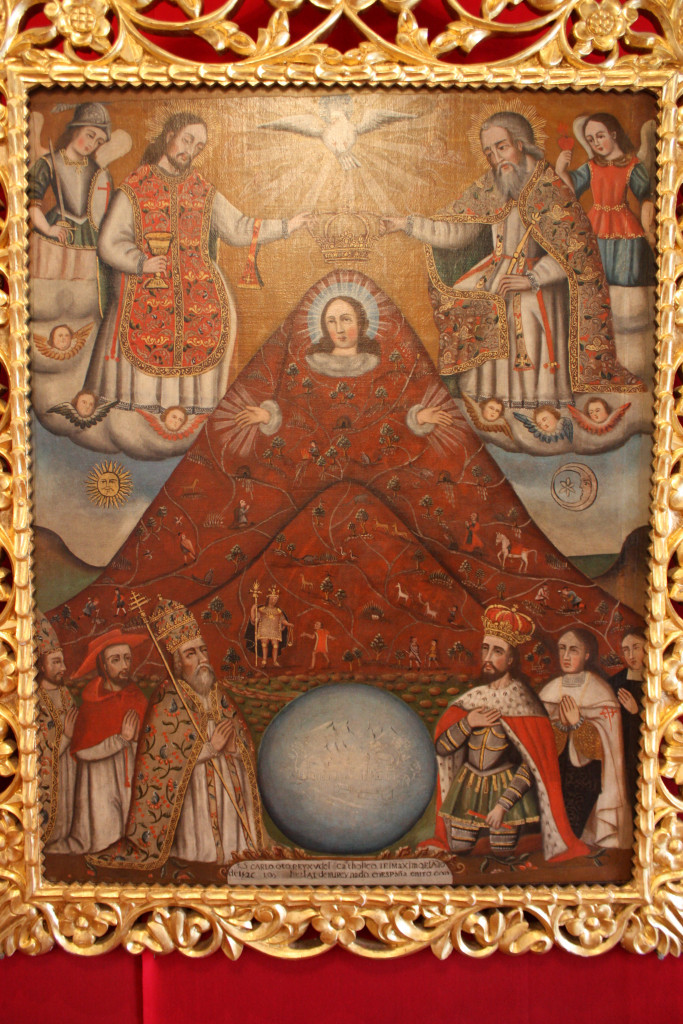In Potosí itself, the Cerro Rico came to be regarded as a divine symbol and embodiment of global empire, rendered in several baroque paintings of the Virgin Mary. Such images also registered miners’ sense that expressions of religious piety would be rewarded with an earthly bounty of silver. Elites thus set aside fortunes to build the Imperial Villa’s impressive churches, convents and monasteries, which expanded when the mines produced the least.
The Virgin of the Cerro Rico of Potosí
The Virgin of the Cerro Rico of Potosí (c.1680; courtesy of Casa Nacional de la Moneda, Potosí; photo by K. Lane).
Kris Lane
Further reading
- Arzáns de Orsúa y Vela, B. (1965) Historia de la Villa Imperial de Potosí, 3 vols., edited by L. Hanke and G. Mendoza (Providence, RI: Brown University Press).
- Bakewell, P.J. (1985) Miners of the Red Mountain: Indian Labor in Potosí, 1545–1650 (Albuquerque, NM: University of New Mexico Press).
- Bakewell, P.J. (1987) Silver and Entrepreneurship in Seventeenth-Century Potosí: The Life and Times of Antonio López de Quiroga (Albuquerque, NM: University of New Mexico Press).
- Barragán Romano, R. (2019) Potosí global: viajando con sus primeras imágenes (1550–1650) (La Paz: Plural Editores).
- Bueuchler, R.M. (1981) The Mining Society of Potosí, 1776–1810 (Syracuse, NY: Syracuse University Press).
- Capoche, L. (1959) Relación general de la Villa Imperial de Potosí [1585]. BAE 122. Edited Hanke (Madrid: Atlas).
- Cole, J. (1985) The Potosí Mita, 1573–1700: Compulsory Indian Labor in the Andes (Stanford, CA: Stanford University Press).
- González Casasnovas, I. (2000) Las dudas de la corona: la política de repartimientos para la minería de Potosí (1680–1732) (Madrid: CSIC).
- Lane, K. (2019) Potosí: The Silver City That Changed the World (Oakland, CA: University of California Press).
- Mangan, J. (2005) Trading Roles: Gender, Ethnicity, and the Urban Economy in Colonial Potosí (Durham, NC: Duke University Press).
- Tandeter, E. (1993) Coercion and Market: Silver Mining in Colonial Potosí, 1692–1826 (Albuquerque, NM: University of New Mexico Press).





